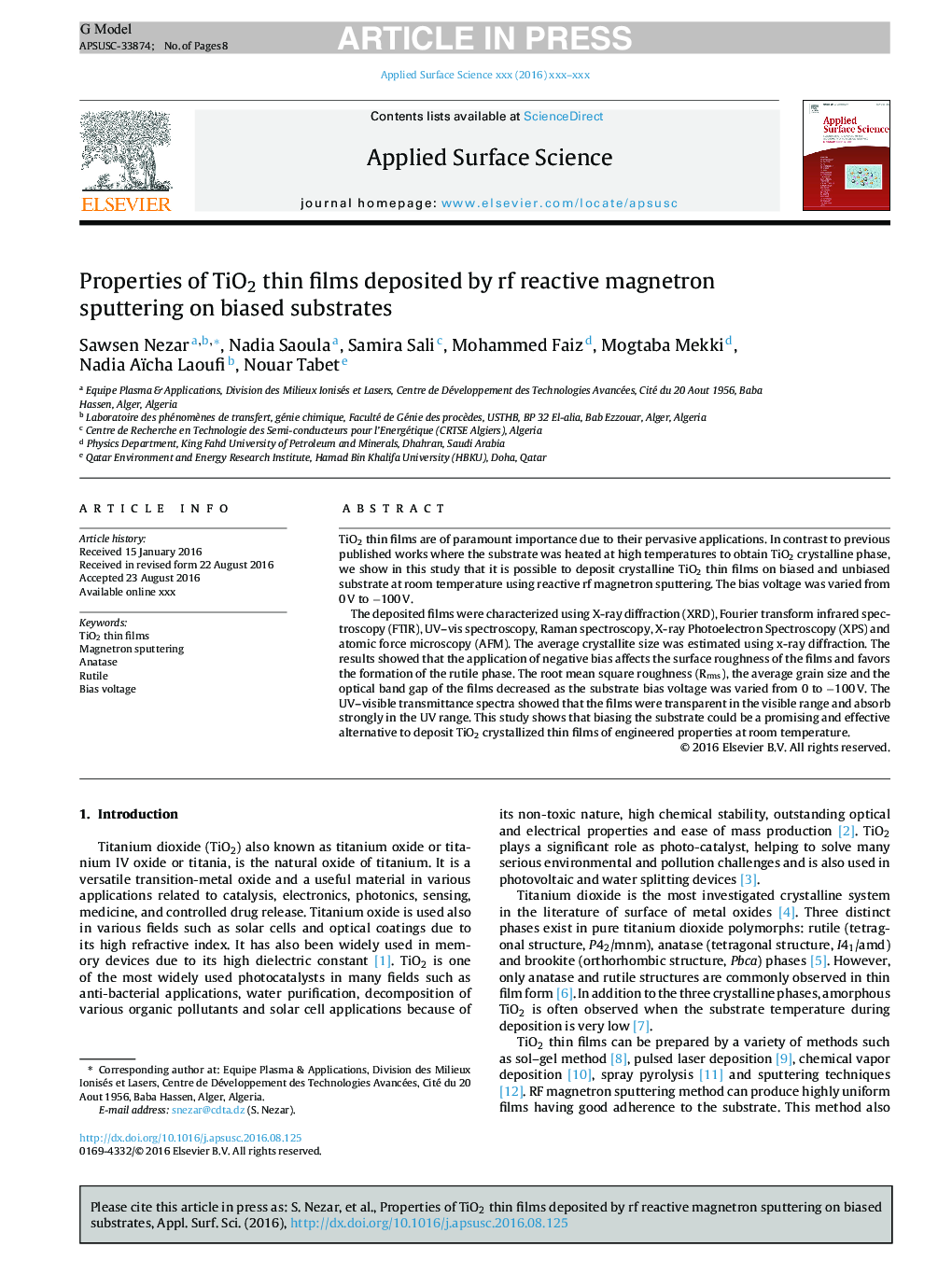| Article ID | Journal | Published Year | Pages | File Type |
|---|---|---|---|---|
| 5348111 | Applied Surface Science | 2017 | 8 Pages |
Abstract
The deposited films were characterized using X-ray diffraction (XRD), Fourier transform infrared spectroscopy (FTIR), UV-vis spectroscopy, Raman spectroscopy, X-ray Photoelectron Spectroscopy (XPS) and atomic force microscopy (AFM). The average crystallite size was estimated using x-ray diffraction. The results showed that the application of negative bias affects the surface roughness of the films and favors the formation of the rutile phase. The root mean square roughness (Rrms), the average grain size and the optical band gap of the films decreased as the substrate bias voltage was varied from 0 to â100Â V. The UV-visible transmittance spectra showed that the films were transparent in the visible range and absorb strongly in the UV range. This study shows that biasing the substrate could be a promising and effective alternative to deposit TiO2 crystallized thin films of engineered properties at room temperature.
Related Topics
Physical Sciences and Engineering
Chemistry
Physical and Theoretical Chemistry
Authors
Sawsen Nezar, Nadia Saoula, Samira Sali, Mohammed Faiz, Mogtaba Mekki, Nadia Aïcha Laoufi, Nouar Tabet,
